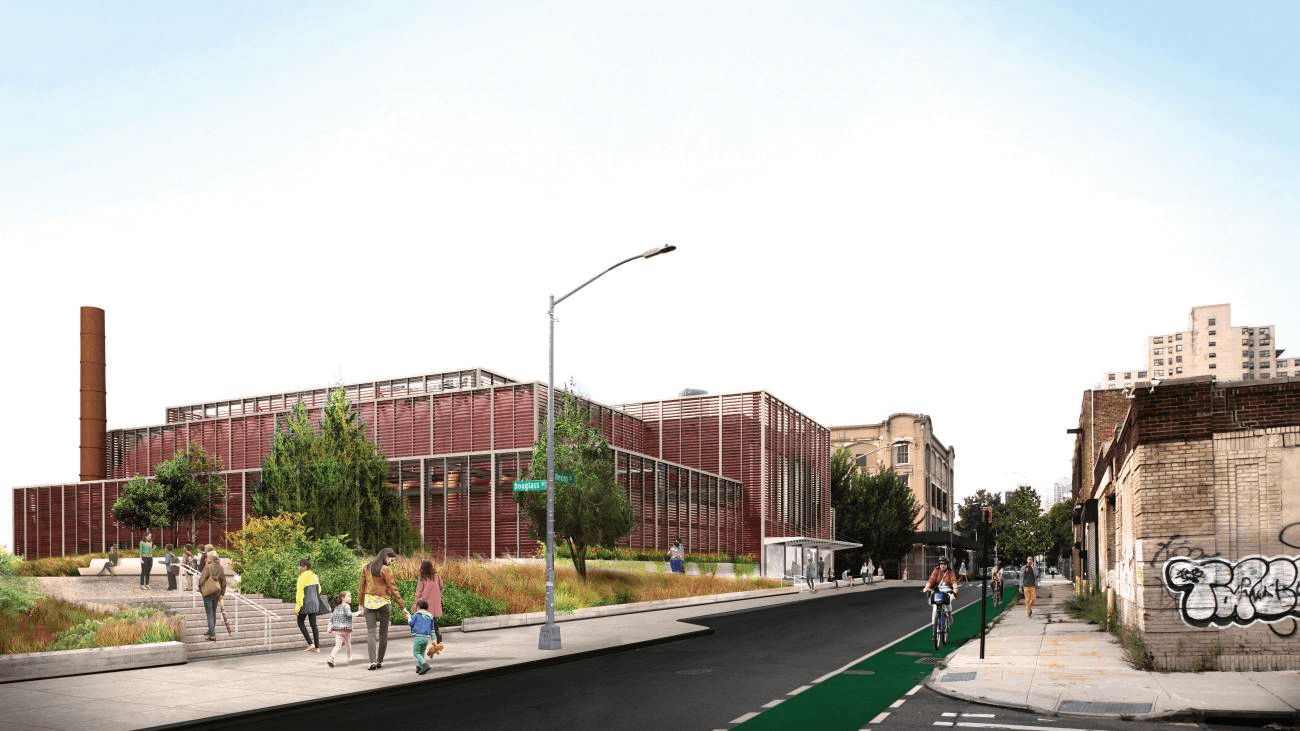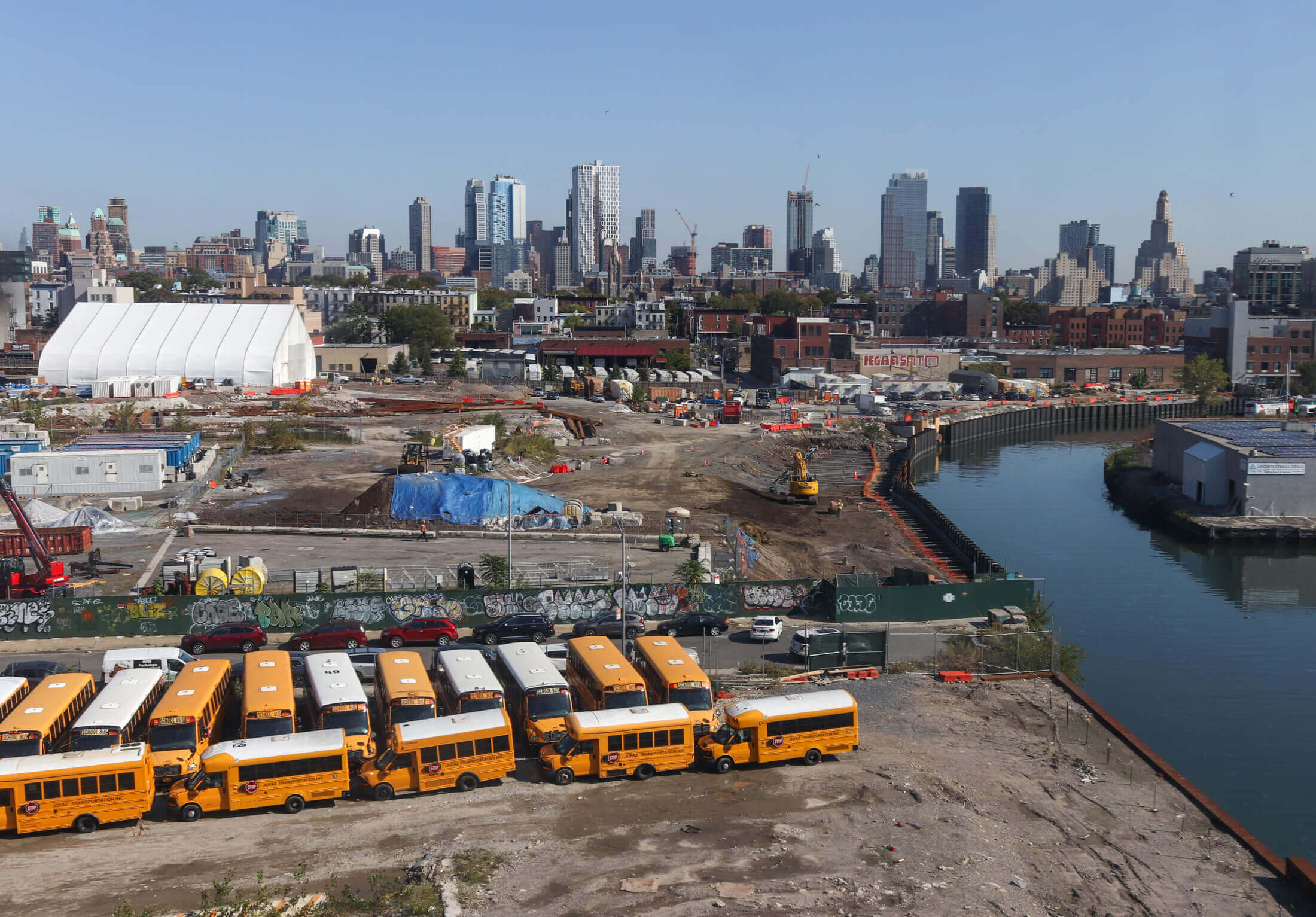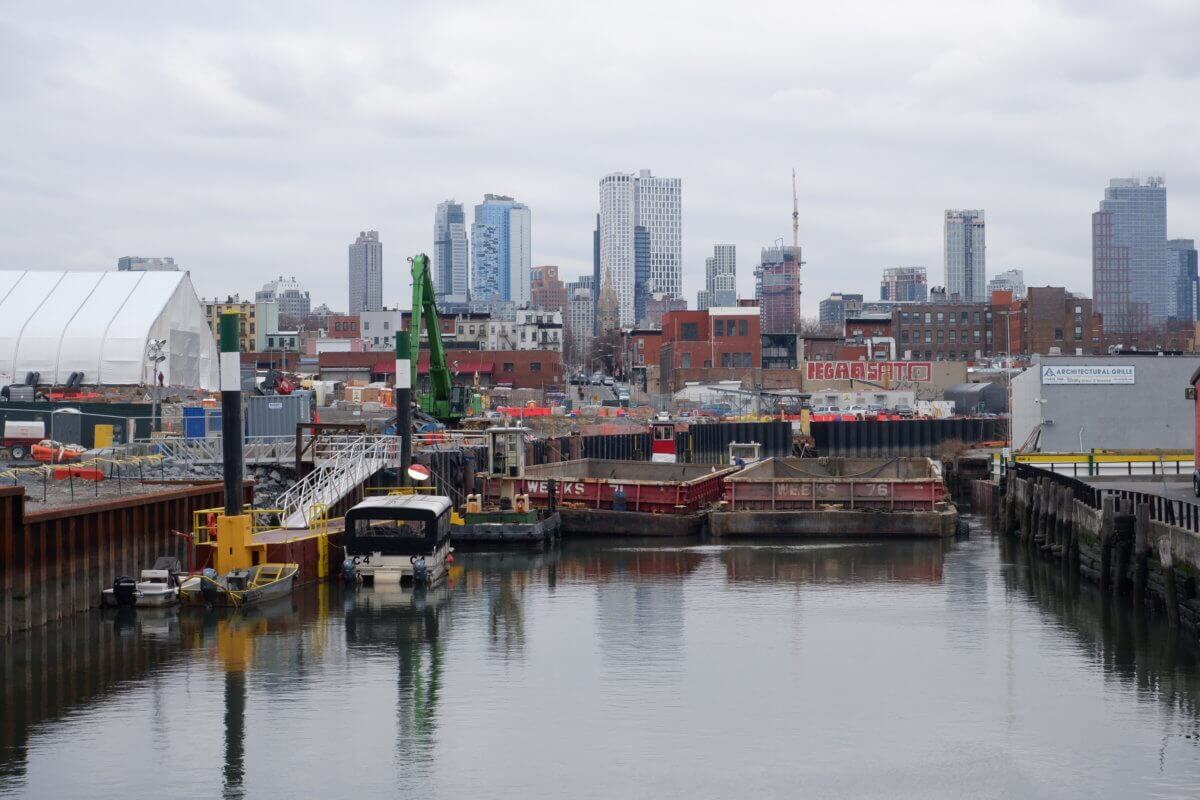Gowanus Canal Cleanup 'Inadequate' Until City Finishes Delayed Retention Tanks, EPA Warns
A federal official has said that current and future residents of Gowanus should know that the ongoing cleanup of the Gowanus Canal is “inadequate,” and will remain that way until the city finishes construction on two behind-schedule sewage retention tanks.

Photo by Susan De Vries
A federal official has said that current and future residents of Gowanus should know that the ongoing cleanup of the Gowanus Canal is “inadequate,” and will remain that way until the city finishes construction on two behind-schedule sewage retention tanks.
“[We should be] getting the message out to people to know that everyone knows that until the tanks are built, even before the development happens from the rezoning, the cleanup is inadequate,” said Brian Carr, a lawyer with the federal Environmental Protection Agency, at a meeting of the Gowanus Canal Community Advisory Group last week. “Everyone should know that.”
The federal scrub of the canal officially started in 2020, more than a decade after the body was dubbed a Superfund site, when the Environmental Protection Agency started dredging 10 feet of toxic “black mayonnaise” from the bottom of the canal.

To keep waste water and sewage from flowing back into the canal during increasingly-common flooding, in 2014, the EPA ordered New York City to build two enormous Combined Sewer Overflow tanks, which will hold millions of gallons of water during rainstorms and allow it to slowly drain away after the storm, preventing re-contamination of the freshly dredged canal.
But the city currently expects to complete construction of the larger tank, dubbed “Head End,” in 2030, and the smaller tank by 2032 — seven and nine years after the EPA projects they’ll finish dredging the canal next year, and well after the deadline the EPA set for the completion of the tanks.
“I think EPA has been very clear about the progress of the cleanup and the lack of progress in certain areas, particularly with the CSO tanks,” Carr said. “And noncompliance (with EPA orders) by the city, and intentional willful noncompliance by the city.”
EPA concerns along the Gowanus Canal
While the city has repeatedly been admonished by the EPA for falling behind in their cleanup efforts, Carr’s frustration was spurred by the ongoing cleanup of the former Fulton Manufactured Gas Plant site at the head of the canal.
The EPA took responsibility for overseeing cleanup on parts of the Fulton site in 2017, including the parcels between Butler and Degraw streets that will house the Head End tank. Christos Tsiamis, the project manager for the Gowanus Canal Superfund cleanup, explained that the EPA’s standards for certain elements of the cleanup are higher than the state’s, so the EPA taking oversight ensured an up-to-snuff remediation.
The agency’s concerns at the Fulton site mostly revolve around the construction of the tanks, which have been delayed several times and are an integral part of maintaining the cleanliness of the canal once the dredging is done.
“We fully expected that excavation of the contamination for construction of the tank by the city would already be occurring by now,” Carr said. “The city is several years behind on that as a result of their noncompliance.”
Joseph Alexiou, an author and CAG member, said that many people think the cleanup is completed, and urged the city, state, and the EPA to be more transparent in their messaging about the status of state and federal scrubs.
“A lot of people are very confused about what it means,” Alexiou said. “All of these people, I don’t know how to paint a clear picture, they all want to believe that all the pollution is gone and that everyone is perfectly happy with this. And that’s not what the case is.”
Tsiamis said he felt the EPA’s position on the cleanup has been clear, specifically referencing a letter sent to DEC in February calling into question the adequacy of the state’s ongoing Brownfield cleanup of Public Place, another former MPG site beside the canal and the future home of an all-affordable housing development called Gowanus Green.

“The letter said we had concerns about vapor intrusion in buildings that are going to be put on Public Place, we had concerns about the pumping of the [coal] tar that will happen for many, many years in the future,” Tsiamis said. “The letter also says EPA, with the data that it has collected over the years, that EPA and its contractors have made the assessment that there is still contamination underneath the site, and that contamination has the potential to migrate off-site.”
Coal tar, a substance left behind at both the Fulton site and Public Place, is a toxic byproduct of the production of flammable gas. The chemicals that make up coal tar, like polycyclic aromatic hydrocarbons and benzene have both short and long term health effects, and are known carcinogens.
The EPA’s letter, and Tsiamis, specifically brought up the possibility of soil-vapor intrusion, when hazardous gasses from substances like coal tar rises upwards into buildings, where it can cause serious health issues for inhabitants.
“That is what the letter says, and that is the message that we are putting out there,” Tsiamis said.
A DEC representative said at the April meeting that the department has received the letter and is in the process of collecting data and clarifying which topics need to be further addressed, and will share its findings with the CAG when they have “reached resolution on various topics.”
Regarding the Fulton site, Carr said he believes the EPA has been clear about the city’s noncompliance with federal orders and the lack of progress on the tanks.
“…the city thinks they are doing what they have been doing in good faith, and EPA is going to be responding to that,” Carr said. “It’s intentional, willful noncompliance, the record is clear.”

The city has long disagreed with the federal agency’s accusations of noncompliance, saying late last year that they are hitting milestones on time, though there were “outstanding questions” about schedules.
“The cleanup of the Gowanus Canal includes work by several different parties, New York City’s projects are progressing as planned, and by working together we can deliver a healthier canal for the community and city,” said Ted Timbers, a representative of the city’s Department of Environmental Preservation, which is heading up the construction of the tanks.
Changing the messaging on the Gowanus rezoning
A public engagement meeting on the Owls Head tank is planned for next Thursday, May 12.
Gowanus is set to see a boom in development and an influx of new neighbors in coming years thanks to the Gowanus rezoning, which is expected to include 8,000 new housing units.
Some community organizations, elected officials and the EPA opposed the rezoning because of inaccurate rainwater modeling used by the city to predict the rezoning’s impact on flooding and CSO discharge in Gowanus. While the city pledged that the upzoning will have a net-zero impact on CSO overflow, it is not clear how they intend to uphold that promise — especially without the Head End and Owls Head tanks completed.
Carr said that if people moving into the neighborhood believe the canal is cleaned, the outreach efforts of the CAG are “not really working.”
“Take the issue of water quality standards,” he said. “This is something the CAG has been working on for a number of years because the water quality at the canal is inadequate. People that are moving to the area, and haven’t quite figured out that the cleanup is not done … either they’re not doing their homework, or collectively, we are not giving them enough information.”
Editor’s note: A version of this story originally ran in Brooklyn Paper. Click here to see the original story.
Related Stories
- Activists File Lawsuit to Overturn Controversial Gowanus Rezoning
- EPA Letter Warns State Cleanup of Gowanus Green May Leave Contamination Behind
- Superfund Cleanup Boots Gowanus Canal Conservancy’s Native Plant Nursery
Email tips@brownstoner.com with further comments, questions or tips. Follow Brownstoner on Twitter and Instagram, and like us on Facebook.





What's Your Take? Leave a Comment